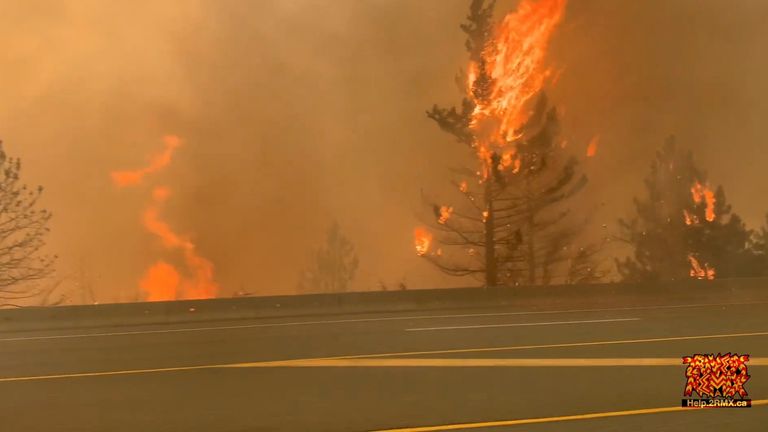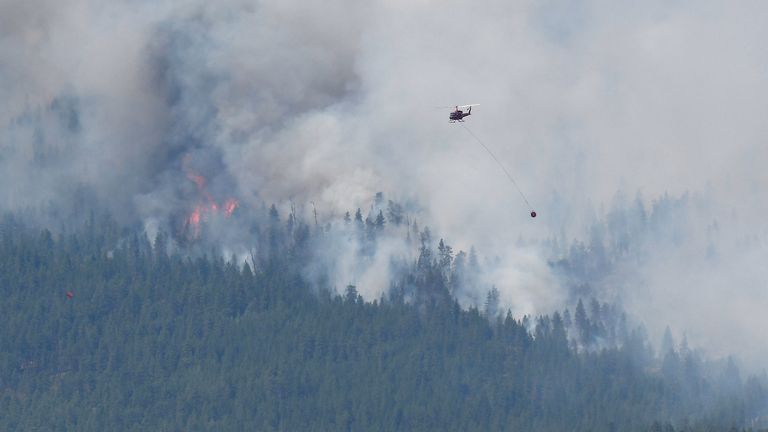Recent record-high temperatures in the US and Canada, which caused hundreds of deaths and huge wildfires, would be “virtually impossible” without climate change, analysis has found.
A rapid analysis of last week’s heatwave in parts of North America by an international team of climate scientists found global warming driven by human activity made it at least 150 times more likely to occur.
In Canada, the village of Lytton in British Columbia was largely destroyed by wildfire shortly after it recorded its highest ever temperature of 49.6C (121.3F) on 29 June and hundreds of deaths have been linked to soaring temperatures in the states of Oregon and Washington in the US.
Scientists have warned that the Earth’s climate system may have crossed a threshold where a small amount of warming was causing a faster rise in extreme temperatures.
What is a heat dome? The record-breaking weather system that hit the US and Canada
Researchers added that it is hard to tell how rare the record-beating heatwave was because temperatures exceeded the range of historically observed temperatures, but statistical analysis suggests it was a one in a 1,000-year event in today’s climate.
Without warming driven by greenhouse gas emissions from sources such as burning fossil fuels, it would have been at least 150 times rarer, scientists from the World Weather Attribution initiative said.
One of the initiative’s leaders, Friederike Otto, from the Environmental Change Institute at Oxford University, said: “What we are seeing is unprecedented.
“You’re not supposed to break records by four or five degrees Celsius (seven to nine degrees Fahrenheit).
“This is such an exceptional event that we can’t rule out the possibility that we’re experiencing heat extremes today that we only expected to come at higher levels of global warming.”
Sjoukje Philip from the Royal Netherlands Meteorological Institute said: “Although it was a really rare event, an event of this extremity would have been virtually impossible in the past and we are going to be seeing more intense and more frequent heatwaves in the future as global warming continues.”
Researchers also warned that a 2C warming, which could be reached as early as the 2040s, could see 50C heatwaves happen every five to 10 years.
The scientists from the World Weather Attribution initiative reached their findings by using climate models to compare what would have happened without climate change and with the current level of warming and found there were two explanations for last week’s event.
The first, was the statistical equivalent of “really bad luck”, with a pre-existing drought and a “heat dome” combining with climate change to create very high temperatures.
The second suggests the climate system has crossed thresholds where a small amount of overall global warming is causing extreme temperatures to rise quicker.
They also warned impacts on human lives and health caused by rising temperatures must be planned for and could happen far into the northern hemisphere, such as in Europe.








